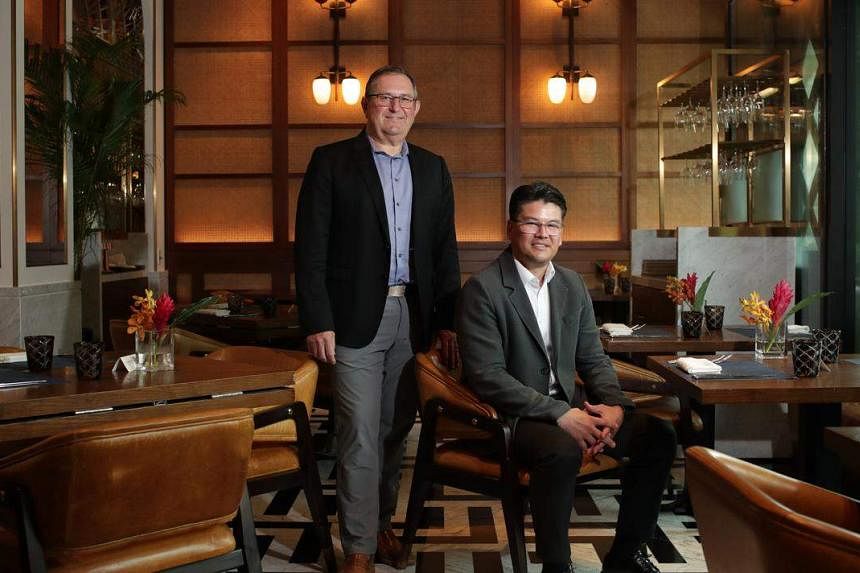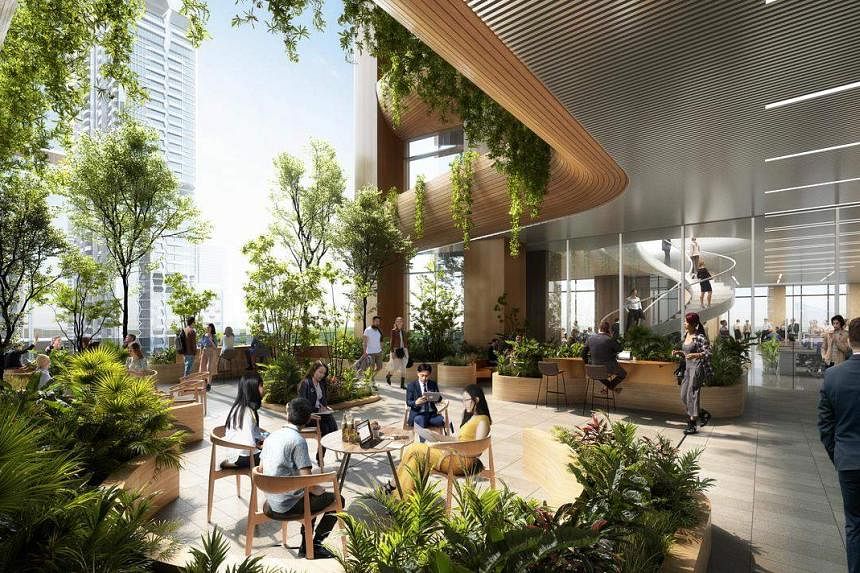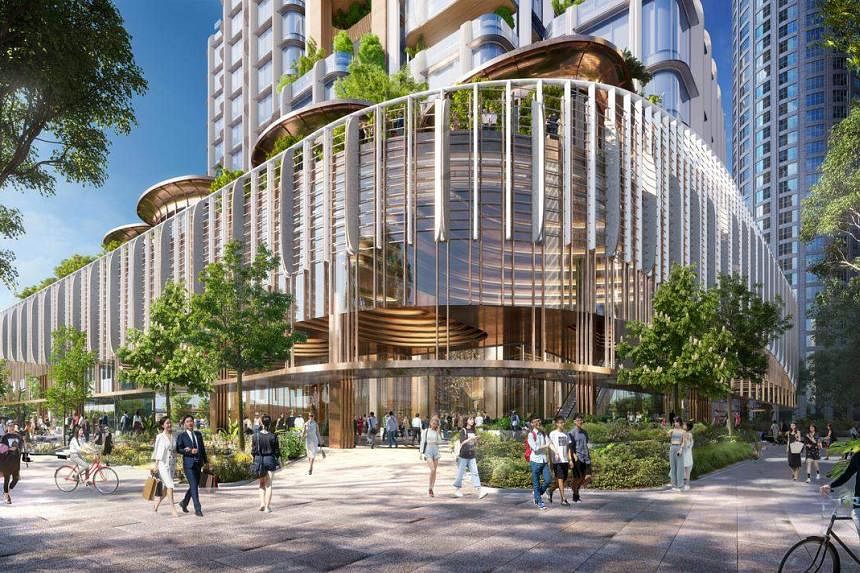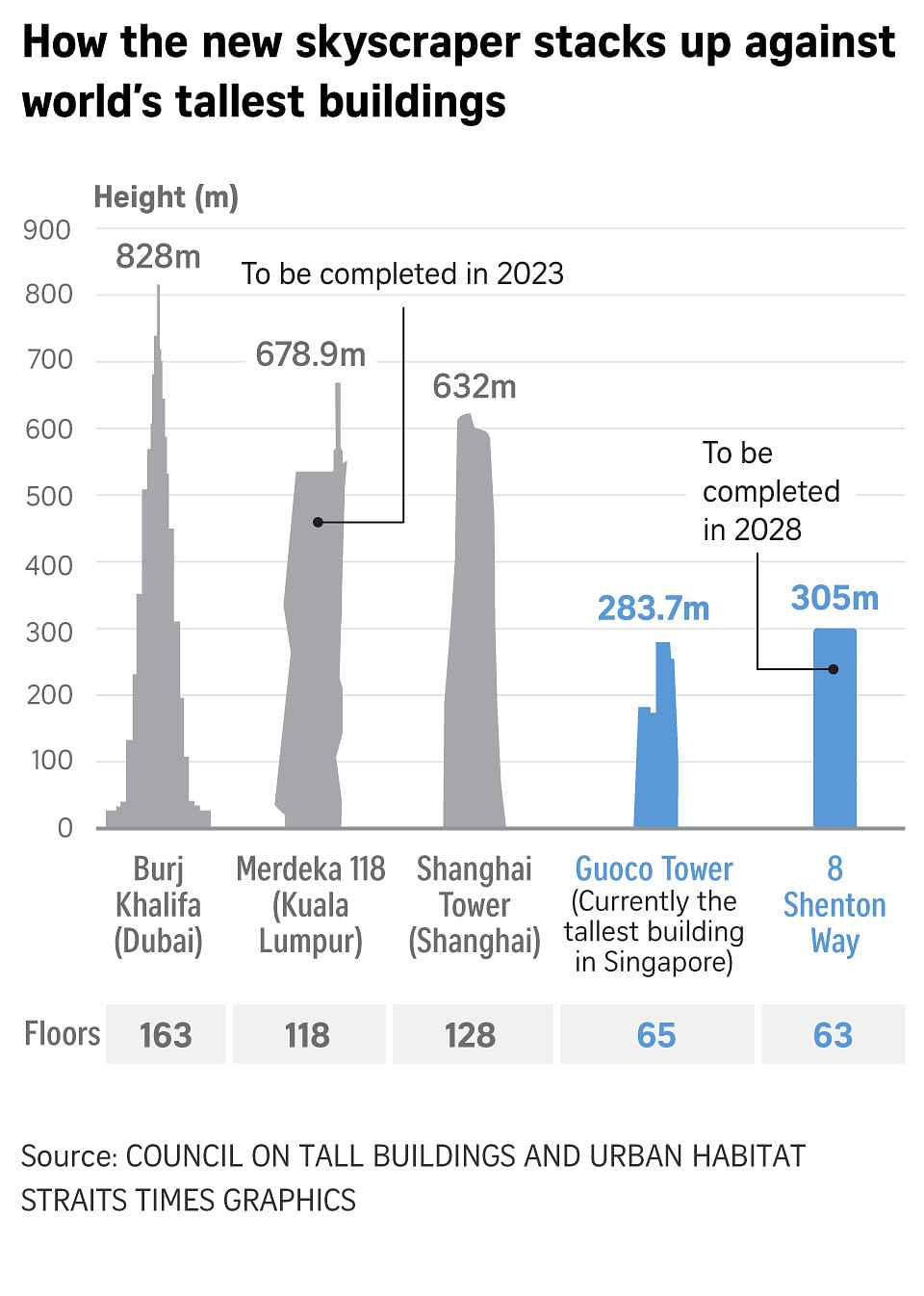Sky-high living: Super penthouse at 8 Shenton Way will be highest residence in Singapore


SINGAPORE – Singapore’s highest residence will be built at 8 Shenton Way by 2028.
And it will take less than a minute by lift to reach the super penthouse unit, which will occupy the top floor of the 305m tower.
The luxurious penthouse, offering unparalleled panoramic views of the South China Sea, is set to dethrone Wallich Residence in Guoco Tower as the highest here.
Wallich Residence’s super penthouse unit at the top of Gucco Tower was sold at a record price of $73.8 million to British inventor James Dyson in 2019.
The architects from American architecture firm Skidmore, Owings & Merrill (SOM), who designed both skyscrapers, are keeping mum about what the new penthouse at the city’s tallest building will offer, even as they unveiled the design of the building on Thursday.
In an interview with The Straits Times on Tuesday, SOM design partner Mustafa Abadan and design principal Nicolas Medrano would only say that the luxurious penthouse will occupy the top floor of the new 63-storey mixed-use development, which houses a vertical community of public spaces, offices, retail units, luxury residences and a hotel.
SOM, which is also the firm behind Dubai’s famed Burj Khalifa tower, is the architectural design consultant, partnering DCA Architects of Singapore, which will serve as the architect of the new skyscraper.
The former AXA Tower site, owned by Alibaba Singapore and Perennial Holdings and its consortium of investors, will anchor the intersection of the Central Business District and Marina Bay.
Nature and sustainability are driving forces behind the design, the architects said.
Mr Abadan said: “By seeking to achieve the city’s newest and most rigorous sustainability standards, our design will establish a new paradigm for resilient and elegant high-rise design in Singapore and beyond.”
From the zero-waste manufacture of terracotta to the use of engineered bamboo, the design seeks to minimise both embodied and operational carbon, with the architects aiming to obtain the highest sustainability certification from the Building and Construction Authority of Singapore.

The new building will reuse part of the existing foundation and infrastructure on-site to reduce material use and embodied carbon during construction. The facade will be built of energy-efficient glazing, and recyclable aggregates will be used in the concrete structure, manufactured through a low-carbon process.
Mr Medrano said: “Emerging from the pandemic, this moment presents a rare and exciting opportunity for architects to explore new approaches to health-driven placemaking.
“Singapore is an incredible canvas to do this, with its excellent quality of life, abundance of green spaces and diversity of cultures. Our design weaves together nature, heritage, connections to transit, luxury living, healthy workplaces and lively public spaces into a thriving hub for the community.”

Across more than 148,000 sq m of floor space, the development will integrate dynamic live, work and play elements, with public performance and events spaces, retail, seating and bike racks incorporated into the design.
The building will connect to Tanjong Pagar MRT station via an underground walkway. Retail spaces will take up three storeys. Office spaces start from the third to the 22nd storey. A hotel will occupy levels 24 to 26, with residential spaces starting from levels 27 to 63.

Landscaping will extend from the street into the building, creating a seamless green corridor for pedestrians. On the second floor, an open-air green space with restaurants offers room to gather, surrounded by a biodiverse landscape with plants chosen specifically to attract birds and butterflies.
In total, the design includes more than 10,000 sq m of elevated, public green space – exceeding the footprint of the entire site.
The idea to create an indoor-outdoor vertical community “is a very Singaporean idea”, said Mr Abadan. “But it is also a very great idea.”
With a “greater level of healthiness at work in mind”, the building was designed to have multiple floors connected to a sky garden so that everybody in the building has access to an outdoor space easily.

This article was first published in The Straits Times. Permission required for reproduction.